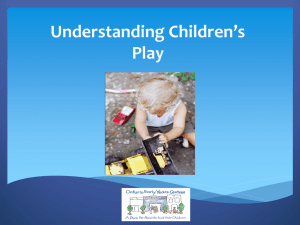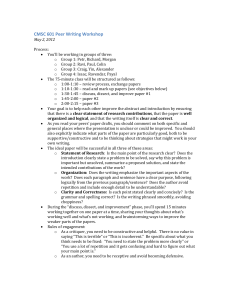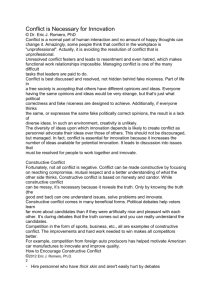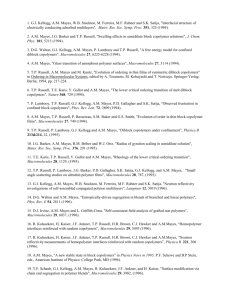Three approaches
advertisement
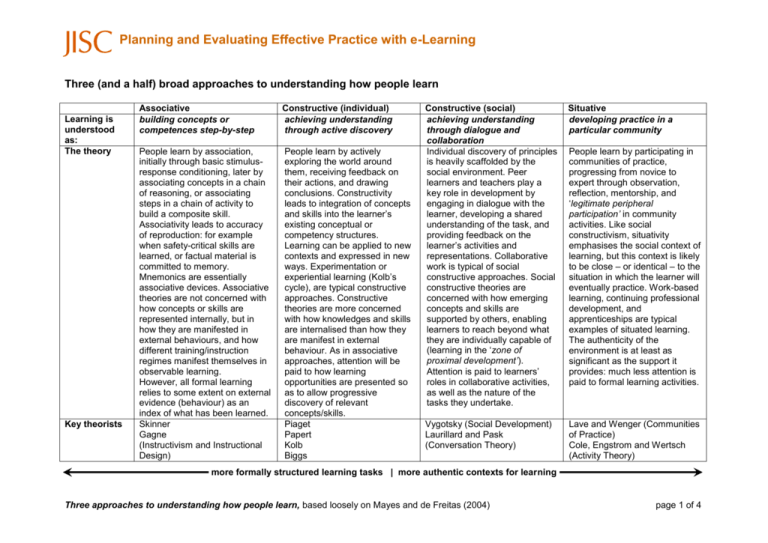
Planning and Evaluating Effective Practice with e-Learning Three (and a half) broad approaches to understanding how people learn Learning is understood as: The theory Key theorists Associative building concepts or competences step-by-step Constructive (individual) achieving understanding through active discovery People learn by association, initially through basic stimulusresponse conditioning, later by associating concepts in a chain of reasoning, or associating steps in a chain of activity to build a composite skill. Associativity leads to accuracy of reproduction: for example when safety-critical skills are learned, or factual material is committed to memory. Mnemonics are essentially associative devices. Associative theories are not concerned with how concepts or skills are represented internally, but in how they are manifested in external behaviours, and how different training/instruction regimes manifest themselves in observable learning. However, all formal learning relies to some extent on external evidence (behaviour) as an index of what has been learned. Skinner Gagne (Instructivism and Instructional Design) People learn by actively exploring the world around them, receiving feedback on their actions, and drawing conclusions. Constructivity leads to integration of concepts and skills into the learner’s existing conceptual or competency structures. Learning can be applied to new contexts and expressed in new ways. Experimentation or experiential learning (Kolb’s cycle), are typical constructive approaches. Constructive theories are more concerned with how knowledges and skills are internalised than how they are manifest in external behaviour. As in associative approaches, attention will be paid to how learning opportunities are presented so as to allow progressive discovery of relevant concepts/skills. Piaget Papert Kolb Biggs Constructive (social) achieving understanding through dialogue and collaboration Individual discovery of principles is heavily scaffolded by the social environment. Peer learners and teachers play a key role in development by engaging in dialogue with the learner, developing a shared understanding of the task, and providing feedback on the learner’s activities and representations. Collaborative work is typical of social constructive approaches. Social constructive theories are concerned with how emerging concepts and skills are supported by others, enabling learners to reach beyond what they are individually capable of (learning in the ‘zone of proximal development’). Attention is paid to learners’ roles in collaborative activities, as well as the nature of the tasks they undertake. Situative developing practice in a particular community Vygotsky (Social Development) Laurillard and Pask (Conversation Theory) Lave and Wenger (Communities of Practice) Cole, Engstrom and Wertsch (Activity Theory) People learn by participating in communities of practice, progressing from novice to expert through observation, reflection, mentorship, and ‘legitimate peripheral participation’ in community activities. Like social constructivism, situativity emphasises the social context of learning, but this context is likely to be close – or identical – to the situation in which the learner will eventually practice. Work-based learning, continuing professional development, and apprenticeships are typical examples of situated learning. The authenticity of the environment is at least as significant as the support it provides: much less attention is paid to formal learning activities. more formally structured learning tasks | more authentic contexts for learning Three approaches to understanding how people learn, based loosely on Mayes and de Freitas (2004) page 1 of 4 Planning and Evaluating Effective Practice with e-Learning Implications for learning Associative Routines of organised activity Progression through component concepts or skills Clear goals and feedback Individualised pathways matched to performance Implications for teaching Analysis into component units Progressive sequences of component-to-composite skills or concepts Clear instructional approach for each unit Highly focused objectives Implications for assessment Accurate reproduction of knowledge or skill Component performance Clear criteria: rapid reliable feedback Example pedagogic approaches Guided instruction Drill and practice Instructional Design Socratic dialogue Constructive (individual) Active construction and integration of concepts Ill-structured problems Opportunities for reflection Ownership of the task Constructive (social) Conceptual development through collaborative activity Ill-structured problems Opportunities for discussion and reflection Shared ownership of the task Interactive environments and appropriate challenges Encourage experimentation and the discovery of principles Adapt teaching to existing concepts/skills Coach and model metacognitive skills e.g. reflection Conceptual understanding (applied knowledge and skills) Extended performance Processes as well as outcomes Credit varieties of excellence Develop self-evaluation and autonomy in learning Cognitive scaffolding Experiential learning (based on Kolb’s learning cycle) Experimental learning Constructivist learning environments Problem-based learning Research-based learning Collaborative environments and appropriate challenges Encourage experimentation, and shared discovery Draw on existing concepts/skills Coach and model skills, including social skills Conceptual understanding (applied knowledge and skills) Extended performance Process and participation as well as outcomes Credit varieties of excellence Develop peer-evaluation and shared responsibility Reciprocal teaching Conversational model (Computer-supported) collaborative learning Three approaches to understanding how people learn, based loosely on Mayes and de Freitas (2004) Situative Participation in social practices of enquiry and learning Acquiring habits, attitudes, values and skills in context Developing identities Developing learning and professional relationships Create safe environments for participation Support development of identities Facilitate learning dialogues and relationships Elaborate authentic opportunities for learning Credit participation Extended performance, including variety of contexts Authenticity of practice (values, beliefs, competencies) Involve peers (Cognitive) apprenticeship Situated learning (Legitimate peripheral) participation (Continuing) professional development Work-based learning page 2 of 4 Planning and Evaluating Effective Practice with e-Learning All approaches emphasise: In learning The central importance of activity on the part of the learner The need for integration across activities, e.g. o Associatively (building component skills and knowledges into extended performance) o Constructively (integrating skills and knowledges, planning, reflecting) o Situatively (developing identities and roles) In teaching/assessment Constructive alignment of activities with outcomes, and outcomes with assessment criteria The importance of feedback (intrinsic or extrinsic) They differ in: The authenticity of the activity → The formality of activity structures and sequences ← The role and importance of other people in mediating the activity → The emphasis on retention/reproduction or reflection/internalisation The locus of control (tutor, learner, or peers) Associative Constructive (individual) Constructive (social) Situative Your own notes Three approaches to understanding how people learn, based loosely on Mayes and de Freitas (2004) page 3 of 4 Planning and Evaluating Effective Practice with e-Learning Associative Constructive (individual) Constructive (social) Situative Example learning outcomes Subjects or disciplines in which this approach is valued more formally structured learning tasks | more authentic contexts for learning Three approaches to understanding how people learn, based loosely on Mayes and de Freitas (2004) page 4 of 4


